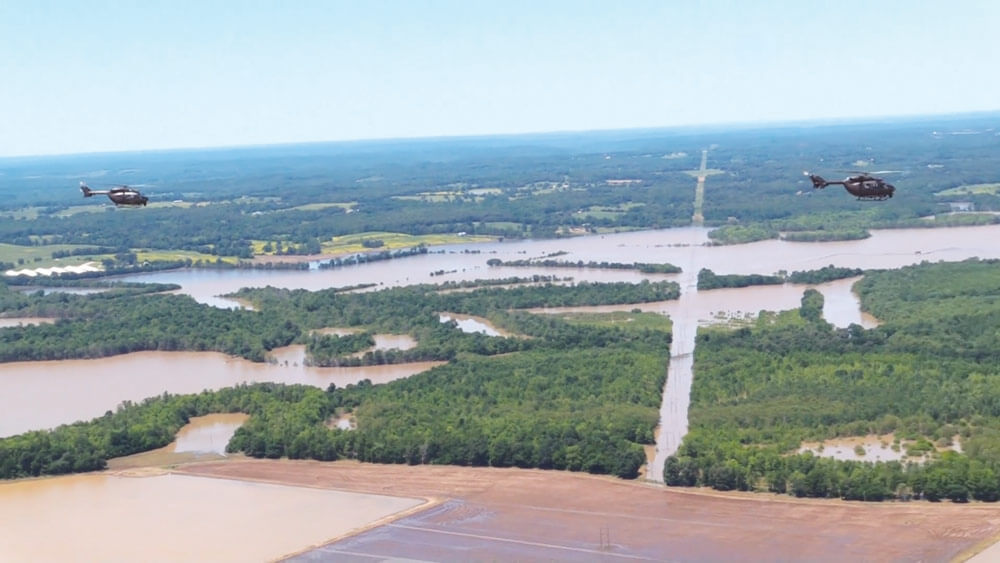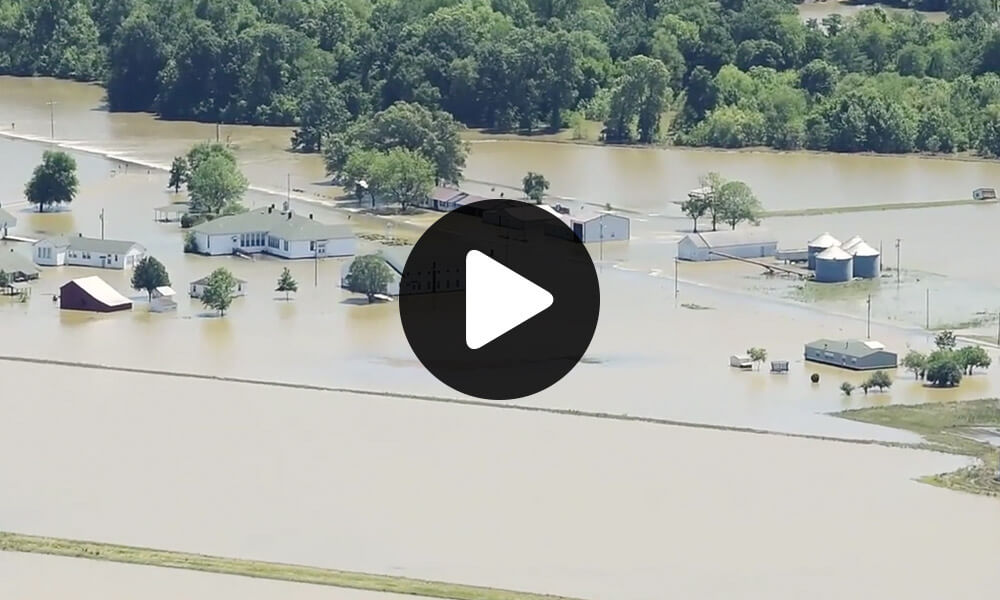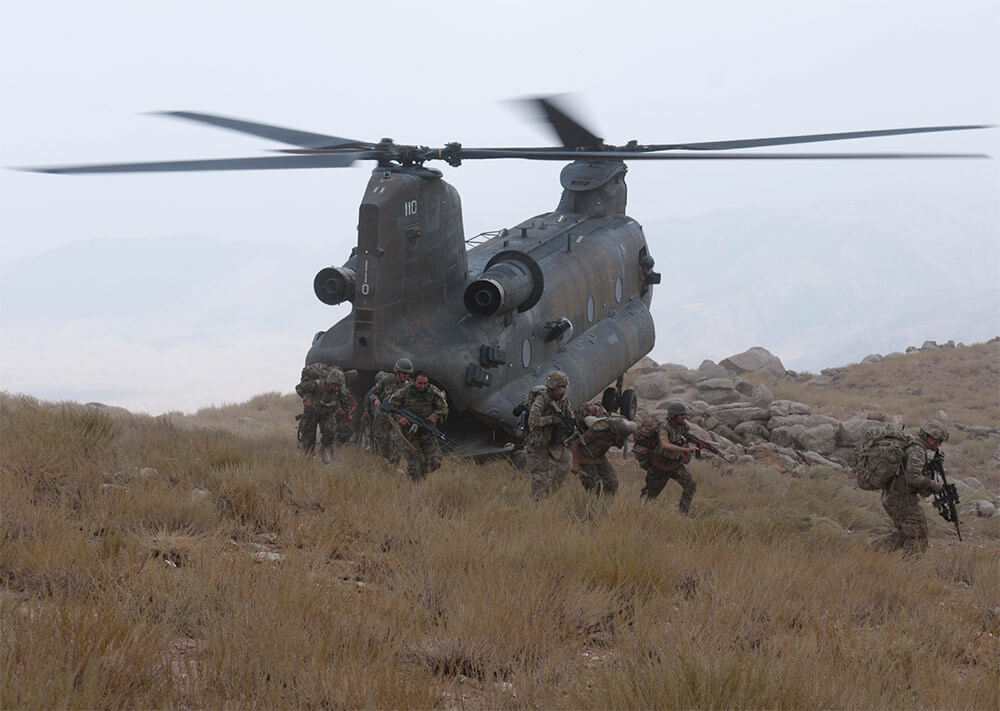Arkansas Army National Guard Responds after Disastrous Flooding
“I can tell you this – without the National Guard, I don’t know what we would have done,” said Pocahontas, Arkansas, Mayor Kary Story.
Mayor Story was referring to the deployment of dozens of Army National Guard Soldiers to the Northeast Arkansas town of Pocahontas. With a population of just under 7,000, Pocahontas’ levy overflowed last spring, causing major flooding in the small town.
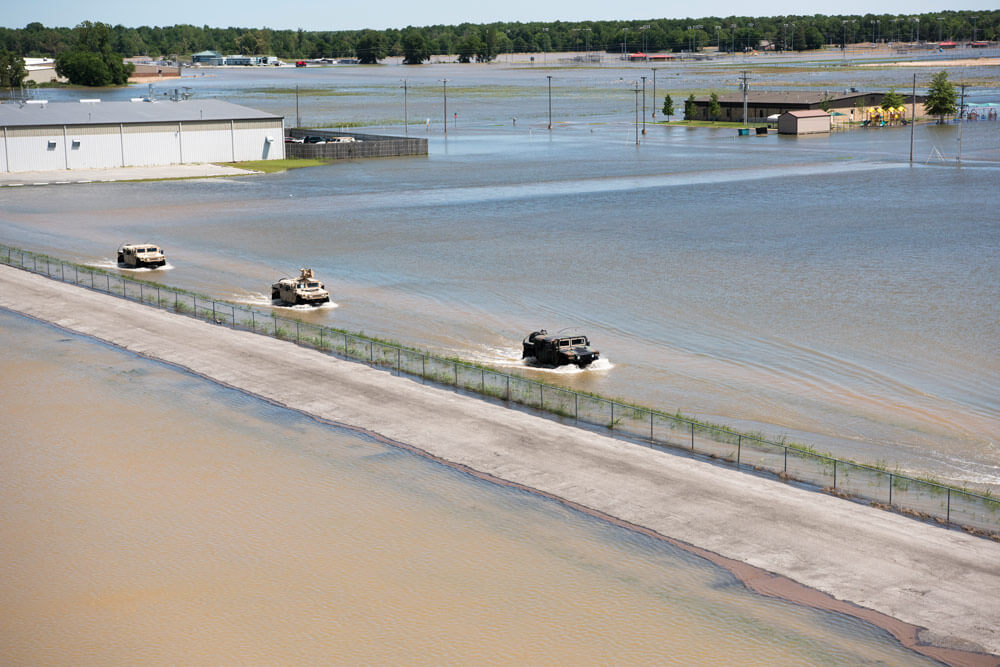
Record flood levels in the Black River, which passes through Pocahontas, led to the levy overflow and ultimately the flooding. This was all undoubtedly due to heavy storms that pummeled the State, including the Delta region where Pocahontas is located, in late April and early May of 2017.
According to Melody Daniel, a spokesperson for the Arkansas Department of Emergency Management, 50 hours of downpour dropped about 5 inches of rain on all of Arkansas, with isolated instances of 6 or 7 inches at some locations. While to some, that may not seem like enough rain to cause major damage, imagine an area where the main economy is agriculture and it is not hard to see how 5 to 7 inches of rain drowning miles and miles of growing crops could be catastrophic.
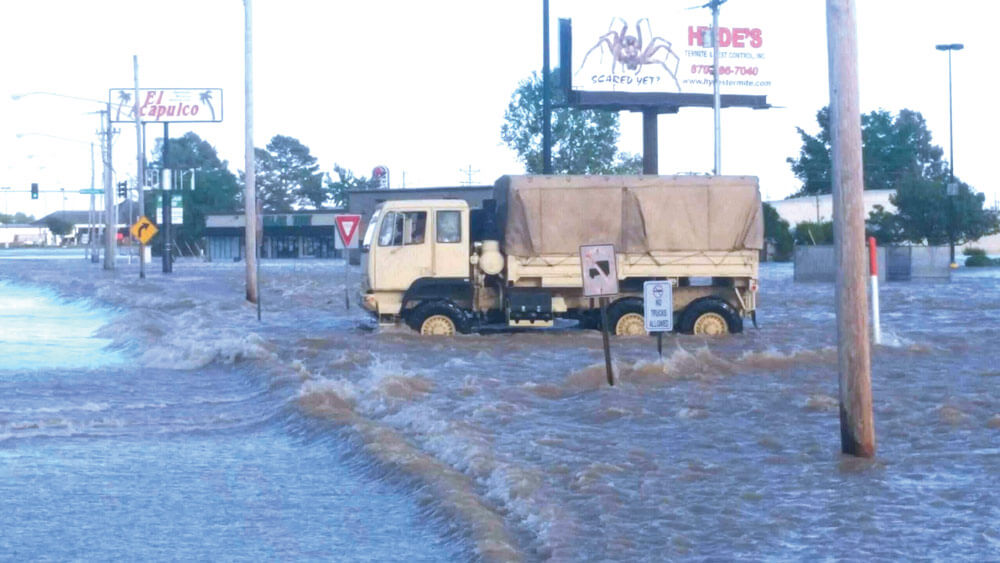
Photos courtesy Arkansas Army National Guard
According to the University of Arkansas System Division of Agriculture, rain and flooding May 8–12, 2017, caused approximately $175 million in losses to crops, affecting about 360,000 acres of farmland.
According to Daniel, flood-related accidents also caused 10 deaths in the State, and almost $20 million in infrastructure and personal property damage was recorded with the Federal Emergency Management Agency (FEMA). In addition, 23 counties in Arkansas were declared disaster areas by the U.S. Department of Agriculture.
Pocahontas and the rest of Randolph County were particularly hard-hit because of a unique topographical trait.
“Randolph County is the only county in the state of Arkansas that has five different rivers that flow into it,” Daniel said. “It’s not just the Black River that is the problem. It’s the Black River, Current River, Eleven Point River, Fourche River and Spring River.”
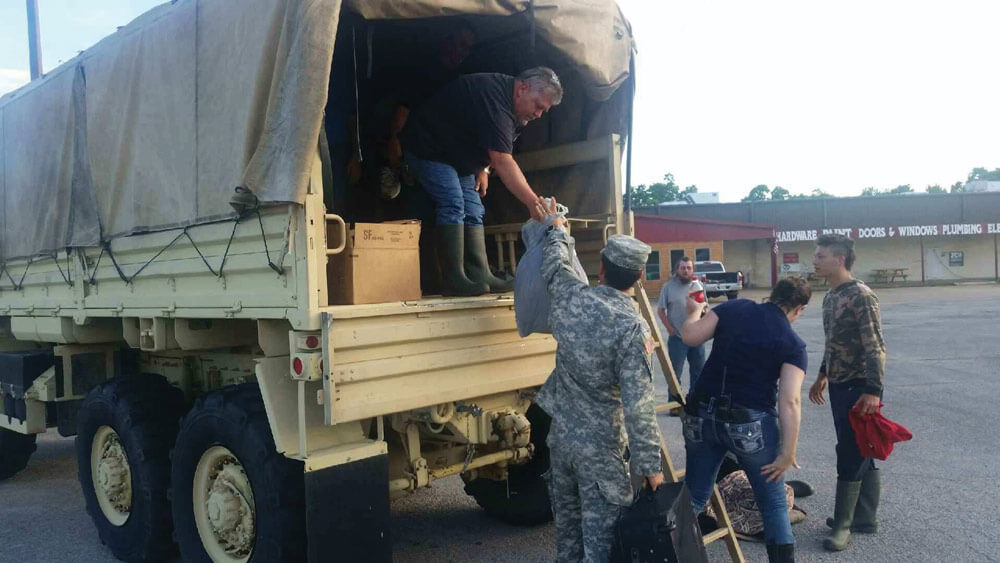
For last year’s flooding, PFC Spencer Saul was on duty at a traffic control point in Delaplaine, near Pocahontas. He was one of 104 Arkansas Army National Guard Soldiers called for deployment between May 2 and May 12 for the flooding.
The main mission of the Arkansas Army National Guard during the flooding was to provide support and relief for overworked police officers and first responders. According to Story, a similar flood in 2011 left the community’s first responders exhausted and stretched extremely thin due to shortages in personnel.
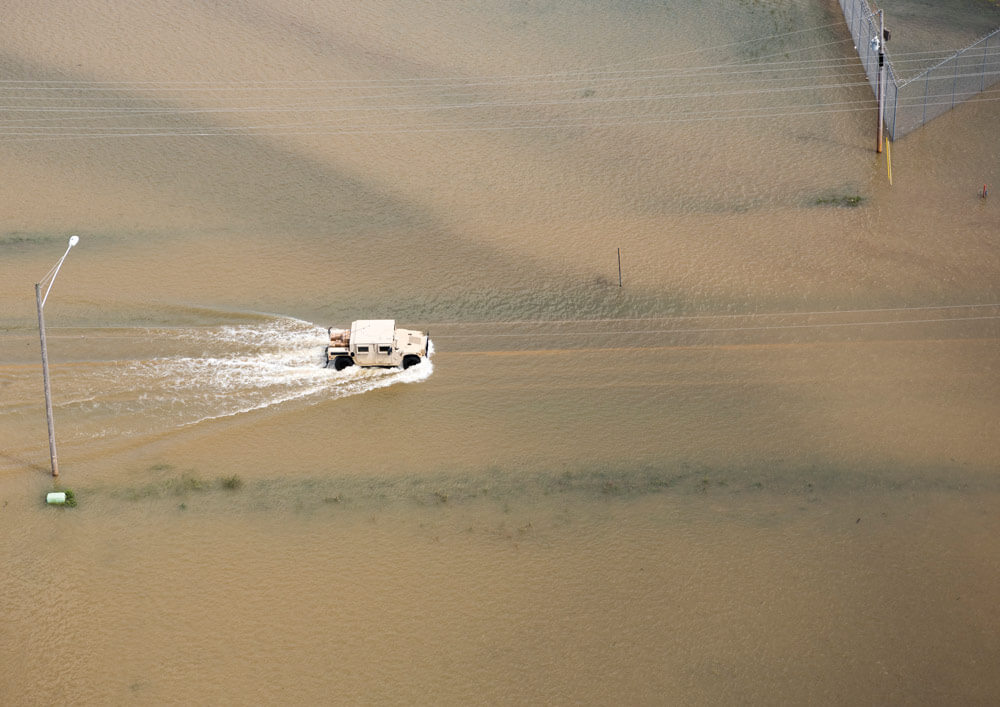
“This time, with the National Guard mobilizing very quick and getting here, they [gave] us the needed manpower,” Story noted. “I think that eliminated a loss of life. They were a blessing.”
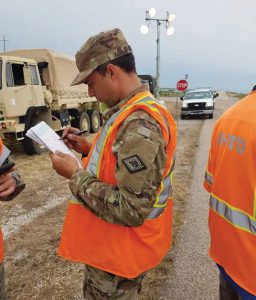
PFC Saul is a 42 Alpha with HHC 875th Engineer Battalion. He and three other Arkansas Army National Guard Soldiers were keeping drivers from traveling down the washed-out highway in the tiny community.
“We were all pretty much doing the same thing – making sure that no [civilians] were going into town that didn’t need to be there,” he said. “We had some high-water rescue teams, and we had some vehicles patrolling, making sure nothing was getting out of hand.”
PFC Saul was stationed on the highway for four days. He said he managed to keep pretty dry, especially after the fire department opened its local firehouse as a place in which they could stay overnight. PFC Saul also said residents kept them well fed as the Soldiers worked to keep everyone safe.
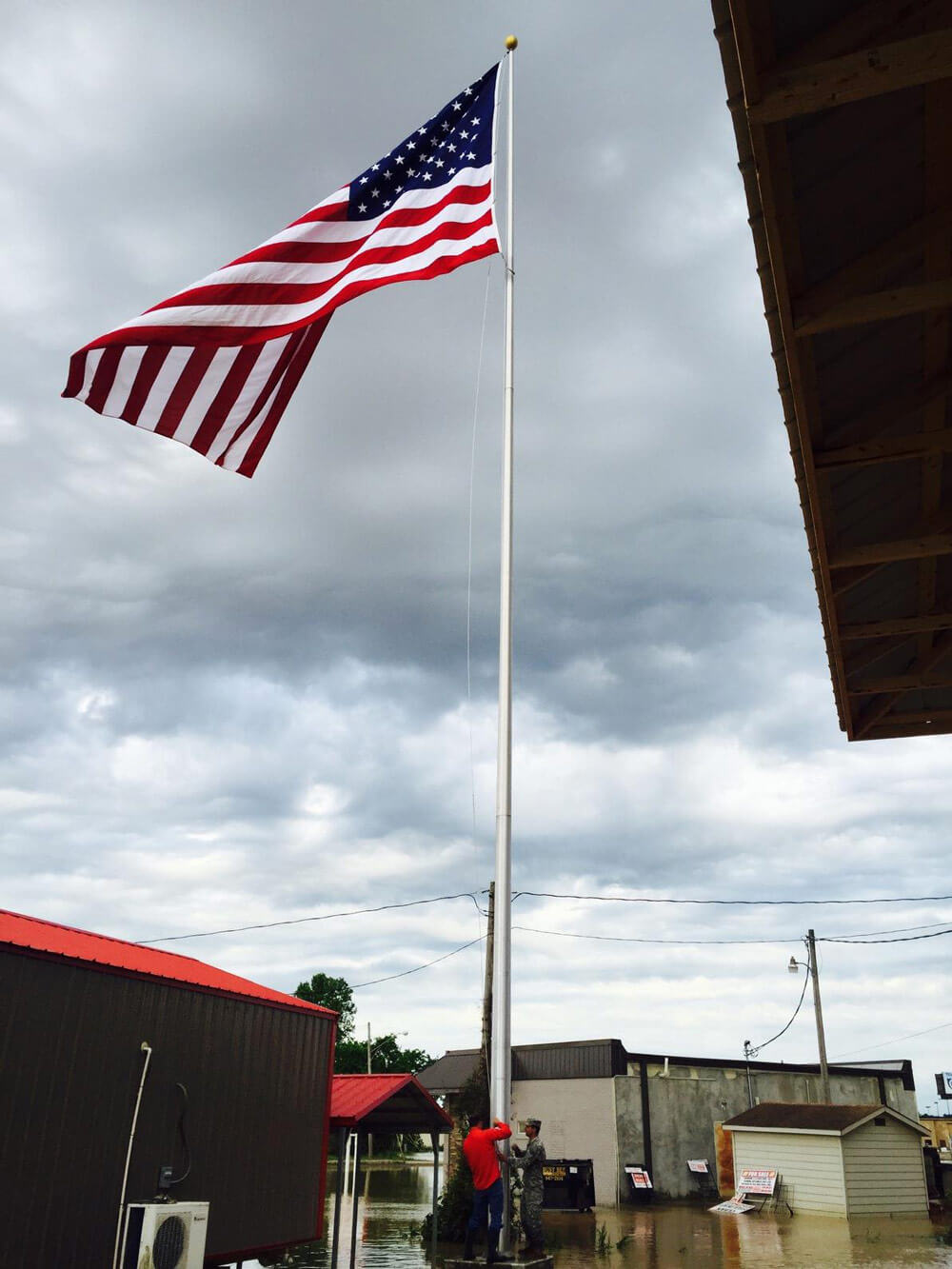
“We had people coming by several times a day bringing us food and water, along with our unit bringing us food and water,” he said.
The Pocahontas flood mission was a new experience for PFC Saul, who had just recently joined the Arkansas Army National Guard.
“That was actually my first time being with my unit. I was fresh out of AIT. I hadn’t even gone to a single drill with them yet. My line leaders let me know that there was an opportunity to go help out with the flooding. That’s when I volunteered. I like to help people. I kind of jumped at that opportunity.”
The instances of serious flooding in the State, according to National Weather Center forecasts, may become a more frequent occurrence. Before the record-breaking 2011 flood, the last flood on the same scale was back in the early 1900s. But on May 3 of last year, just 6 years after the last flood, the Black River crested again at a new record level – 28.95 feet.
Again, this year officials are looking at a possible repeat of last year’s flooding – as heavy rains inundated the State in late February.
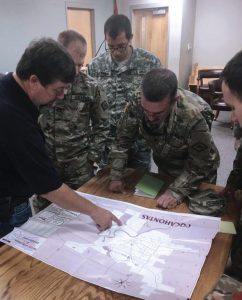
“As we speak, we’re monitoring Pocahontas very carefully to see if they’re going to need more high-water teams,” said LTC Paul Jara, Joint Operations Center operations officer, in an interview with Citizen-Soldier this past January. “This flooding event is not as bad, but because the levy is not as tall as it was back in May of 2017, there’s a chance that this relatively minor event could be just as bad because the levies aren’t as robust as they were before.”
Data supports the lieutenant colonel’s suspicion. Measurements from the National Weather Service show the Black River has had 18 historic crests since the year 2000, but recorded just 34 historic crests in the 85 years between 1915 and the turn of this century.
What’s more, Arkansas is one of the most flood-prone states in the country. A study done by The Pew Charitable Trusts examined FEMA’s database of disaster declarations. It revealed that Arkansas topped all other States for the most flood disasters between 2008 and 2017, with 17 nationally declared flood disasters.
“The challenge with Pocahontas was nobody saw the levy actually being overtopped,” LTC Jara recalled. “I think the Corps of Engineers referred to it as a ‘500-year flood’. It’s been theoretically a long time since that’s happened, although these [so-called] 100- and 500-year floods seem to be occurring more frequently.”
If the residents do need help, the Soldiers of the Arkansas Army National Guard will be there, ready to serve.
“I can’t really explain it,” PFC Saul said. “It gives you a good feeling [to serve the community]. It gives you purpose.”
By Staff Writer Matthew Liptak
